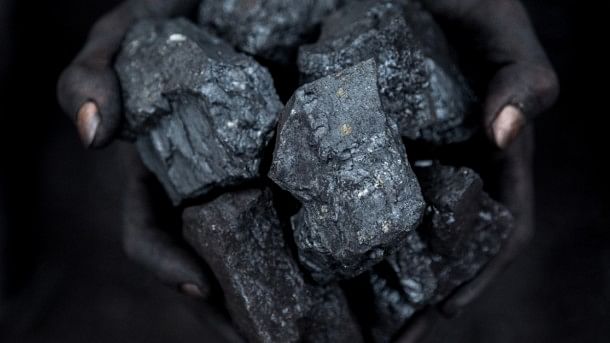
Representative image showing coal.
Credit: iStock Photo
Bengaluru: India’s commitment to attain net zero carbon emissions by 2070 seems to be at odds with its continued engagement with thermal energy, especially during the peak summer season. Far from shrinking its dependence on fossil fuel, the country is increasing its investment in coal mines and thermal power stations.
According to data from the Ministry of Coal, overall coal production in September 2023 jumped 15.81 per cent to 67.2 million tonnes, compared to 58.04 million tonnes in the same period last year. Cumulative production in the first half of the ongoing fiscal (April-September) increased 12.06 per cent year-on-year to 428.25 MT.
Simultaneously, state owned players like Coal India Ltd and NLC India Ltd have multiple thermal power plant plans in the works, to be set up across the country, with a completion target around 2028.
“Thermal capacity will continue to play a major role in India’s electricity supply share. In the 2030 and even 2047 projections, coal and lignite continue to play a dominant role,” NLC India’s chairperson and managing director Prasanna Kumar Motupalli told DH, adding that the country harbours coal reserves for nearly 100 years, going by the current rate of resource exploitation.
Where are we on green energy?
According to data from the national investment promotion and facilitation agency, Invest India, the country’s installed non-fossil fuel capacity increased 396 per cent in the last 8.5 years to stand at nearly 180 GW (including large hydro and nuclear) and comprise about 43 per cent of India’s total capacity, as of July 2023.
However, these capacities continue to lag behind the the thermal sector. Between 2023-2030, India’s total installed capacity is expected to see a substantial 80 per cent growth, from 416 GW to 748 GW, said Miren Lodha, director for research at CRISIL Market Intelligence and Analytics. By the end of the decade, he sees 51-53 per cent of India’s power generation dominated by thermal plants.
This comes even as prices for per unit of power supplied from standalone solar/wind power plants have plummeted significantly to range between Rs 2.5-3 per unit, as opposed to an average of over Rs 4 per unit from thermal power plants, highlighted Tanya Singhal, founder of carbon emission solutions provider Mynzo Carbon.
Industry players stated the intermittent nature of energy supply from renewable sources in the absence of adequate energy storage systems, as the primary challenge.
“Right now a chunk of the 180 GW renewable energy available is real time power - when the sun shines or the wind blows. It is not a 24-hour solution and it is not available during peak hours,” explained Singhal.
Energy storage technology, whether battery or pumped storage, isn’t new. However, it continues to be expensive. Even though prices have plunged by a fourth in the last five years, owing to technological advancements, the math boils down to Rs 5-5.5 per unit of power round the clock, Singhal said.
She sees a 10-15 year timeline before renewable sources secure a lead in India’s energy supply mix. Technological advancement takes place in growth spurts, which is then followed by a period of adoption, stabilisation and scale up, she reasoned.
More regulatory support needed for green energy
Other challenges for the sector range from land acquisition to evacuation of resident population for renewable energy power projects, and no immediate leg up in the manufacturing industry, said Rajashree Murkute, who is a senior director at CareEdge Ratings.
She, however, attested to a growing market opportunity for Indian manufacturers in light of the ‘China Plus One’ policy wherein global companies are diversifying their production operations away from China.
Going forward, regulatory evolution and clarity in areas such as carbon market development, grid integration of renewable energy, Production Linked Incentive scheme for the EV value chain and energy storage will be crucial to keep up the momentum, said Lodha.
However, with the unpredictable nature of natural calamities, it would be prudent to rely on a certain quantum of coal as a strategic back up, say
industry observers.